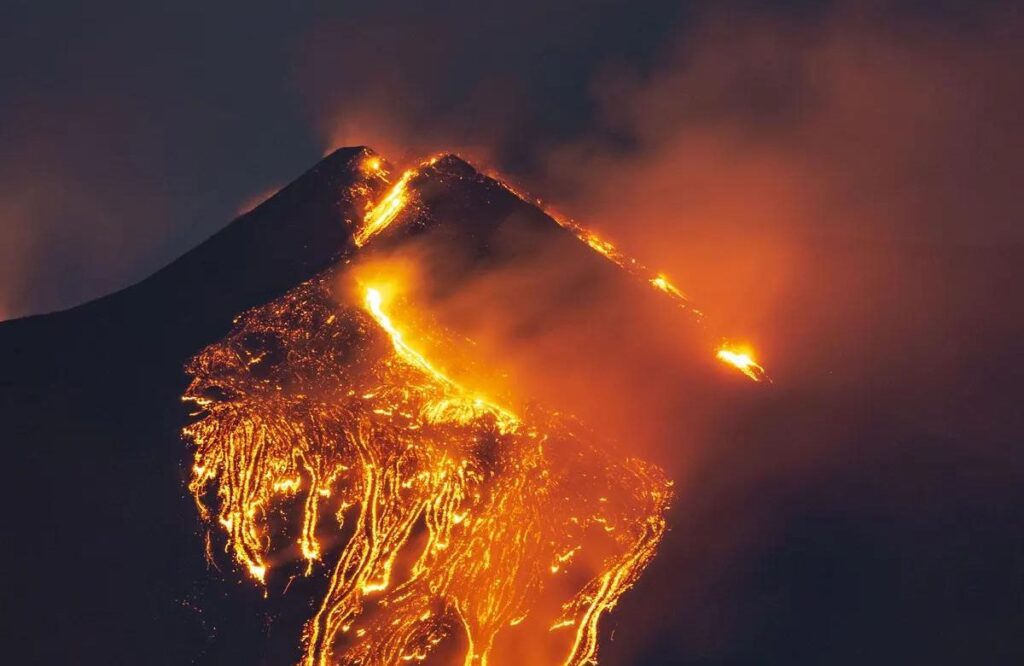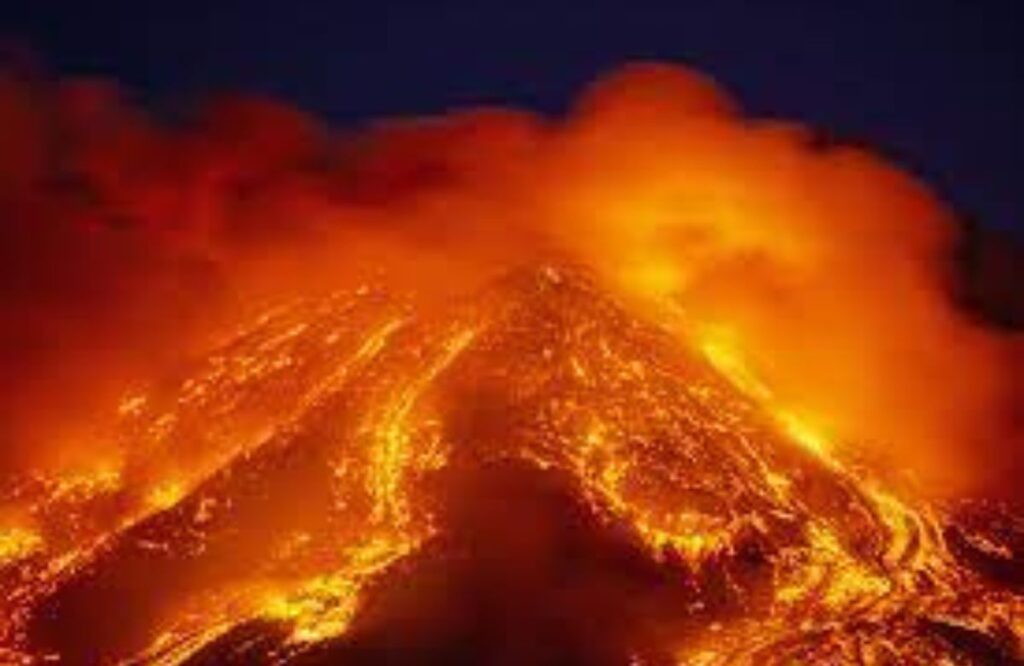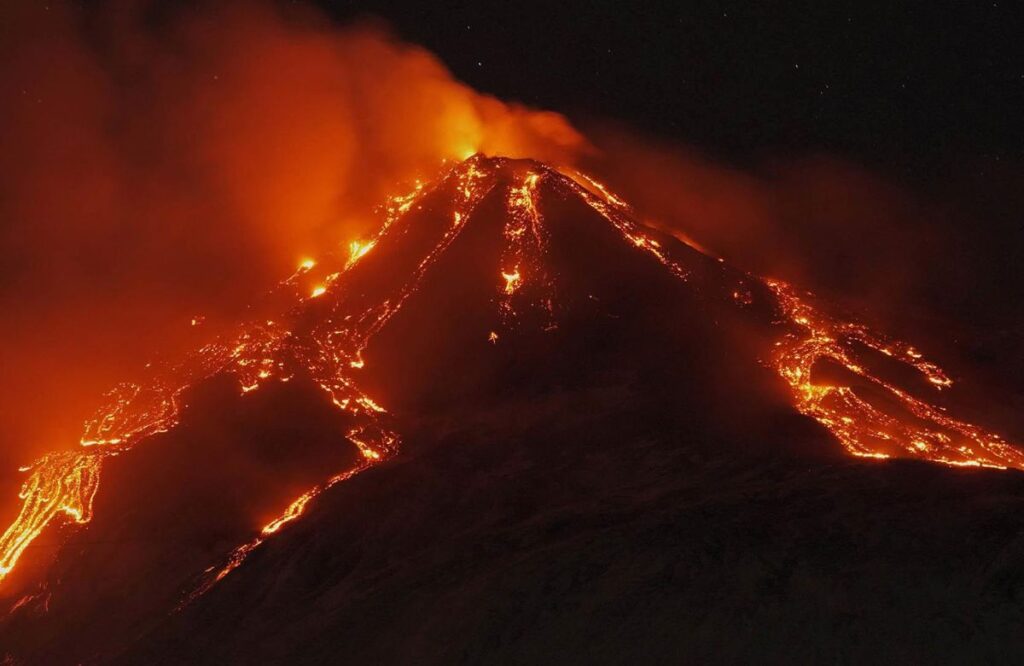Introduction
Mount Etna, Europe’s tallest and most active volcano, has once again captured the world’s attention as it recently erupted, unleashing a spectacular display of nature’s power. Situated on the east coast of Sicily, Italy, Mount Etna has a rich history of volcanic activity, making it one of the most closely monitored and studied volcanoes in the world. The recent eruption serves as a reminder of the dynamic forces at play beneath the Earth’s surface and the constant vigilance required to understand and mitigate the impact of such events.
The Geological Significance of Mount Etna
Mount Etna stands as a towering testament to the geological forces shaping our planet. As a stratovolcano, it is characterized by its steep slopes and periodic explosive eruptions. The volcano is part of the larger complex of volcanoes in the Mediterranean region, formed by the subduction of the African tectonic plate beneath the Eurasian plate. This geological setting contributes to the intense volcanic activity in the area, with Mount Etna being the most prominent and active participant in this geological drama.

The Eruption Event
The recent eruption of Mount Etna began, sending plumes of ash and smoke into the sky. The explosive event, while not uncommon for this volcano, attracted widespread attention due to its intensity and the stunning visual spectacle it created. The eruption was accompanied by lava flows, which streamed down the slopes of the mountain, posing both a threat and a marvel to those witnessing the event.
Volcanic Activity and its Impact
The volcanic activity on Mount Etna is a constant reminder of the dynamic nature of the Earth’s crust. The magma beneath the surface is under immense pressure, and when it finds a release, it can result in eruptions of varying magnitudes. While these eruptions contribute to the formation of new land and enrich the soil with minerals, they also pose significant challenges to the communities living in the vicinity.
The impact of volcanic activity extends beyond the immediate danger of lava flows. Ashfall, one of the most common consequences of volcanic eruptions, can have far-reaching effects. The fine particles released during an eruption can disrupt air travel, contaminate water sources, and pose health risks to humans and animals alike. The surrounding ecosystems may also suffer, with vegetation and wildlife facing the consequences of volcanic activity.

Mitigation Efforts and Preparedness
Due to its history of frequent eruptions, authorities in Sicily have developed robust monitoring and mitigation strategies for dealing with Mount Etna’s volcanic activity. Advances in technology, such as satellite monitoring and ground-based sensors, provide scientists with valuable data to predict eruptions and assess potential risks. Evacuation plans and emergency response measures are in place to protect the local population when eruptions occur.
The Importance of Research
Mount Etna’s recurrent eruptions make it an ideal laboratory for scientists studying volcanic activity. Researchers from around the world flock to Sicily to study the volcano’s behavior, contributing to our understanding of volcanic processes and improving our ability to predict eruptions. This knowledge is crucial for developing effective strategies to minimize the impact of volcanic events on both human communities and the environment.

Tourism and Mount Etna
Paradoxically, the volcanic activity of Mount Etna has also become a draw for tourists seeking a unique and awe-inspiring experience. Guided tours offer visitors the chance to witness the volcano’s power while ensuring their safety. The tourism industry, however, must strike a delicate balance between providing access to this natural wonder and safeguarding the well-being of both visitors and locals.
Conclusion
Mount Etna’s recent eruption serves as a vivid reminder of the Earth’s dynamic nature and the need for ongoing research and preparedness. As Europe’s tallest and most active volcano, it continues to capture the imagination of scientists, tourists, and locals alike. While eruptions bring challenges and risks, they also contribute to the rich tapestry of geological processes that shape our planet. With advancements in technology and a deeper understanding of volcanic activity, we can appreciate and mitigate the impact of these natural events, fostering coexistence with one of nature’s most powerful forces.








